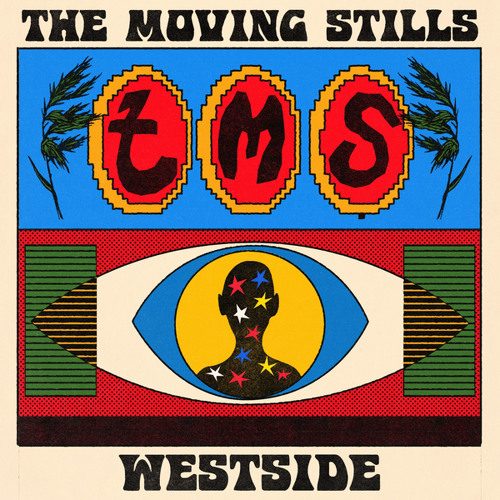Why did the Moving Stills call this song “Westside”?
Not just because they’re touring (though, yes: at the time of this typing, the Australian band is wrapping up its “Westside” tour.) Titles are a kind of signpost: they can tell you where to focus in a song.
“Westside” points to the geography of “distant love.”
The road is littered with songs addressed to a distant loved one. “Westside” stands out because it doesn’t bemoan the distance. Instead, it asserts, “Distant love is a fruitful tree.” One of the song’s first images is the fruitful abundance of the landscape the singer travels through: “there’s so much fruit around / to slow my breathing down.” The “fruitful tree” refrain connects love to landscape.
Love in this song is as big as a season. “You’re an endless summer on the balcony, and a gentle breeze when you feel the need.” Summer gets in under the doorjamb. It gets under your skin. Like love, it changes everything. In this song, the beloved is light and air, a phenomenon who causes “a feeling in the room.” Any room: motel, rest stop, Australian music venue wherein this song is sung. By not naming the room, the song makes itself applicable to all of them – it makes itself about all of them.
This could be straight autobiography, a song chronicling a “couple nice weeks on the east side / travelin’ round and playing shows.” That is what this band is doing right now.
But why make a love song out of your itinerary?
If we translated this song into the form of a letter, or a series of text messages, it would go something like this: “Hey, we’re on the westside now, tour’s going well, I’m thinking of you.” “Hey again, now we’re out East, still going well, still thinking about you, just wanted to let you know loving you makes life feel good.” This song makes a map between two people. The distance between them is no longer empty space, it’s a measure of their love. Which is vast: it stretches across Australia.
“Westside” sounds like a lot of Moving Stills songs, but distinguishes itself by its details. Something like a video game sound effect swirls in just before the chorus, without warning or explanation. Equally out-of-the-blue is the harmonica solo – a surprising lonesome interjection, quickly swept away on the urgent beat.
This sonic playfulness is more than just fun for the listener. It’s also a storytelling tool. The landscape of the song is familiar: eastside, westside, the balcony, summer, all painted in the sandy, driving tones The Moving Stills favor. Then into this landscape marches a harmonica solo. Where’d that come from? Straight out of the summer sky. This song takes place in a world in which a sound can show up for no reason other than to delight.







